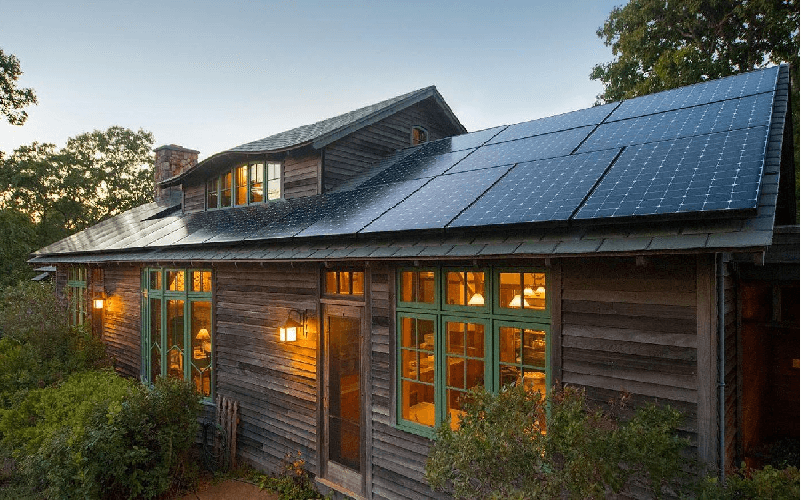
A. Introduction
1. Definition
Solar energy is the heat and bright light from the sun that can be collected via photovoltaic cells, solar heating, solar thermal energy, solar architecture, and artificial photosynthesis, among other technologies.
It is an endless and renewable resource as opposed to finite fossil fuels that exacerbate environmental damage.
B. Why is solar energy a renewable energy source?
Consider why solar energy is regarded as a renewable energy source before learning how it is transformed into electricity.
Among the many reasons solar energy is seen as renewable is that, unlike fossil fuels like coal and oil, which are finite and require millions of years to create, the sun is an infinite supply of free, accessible energy.
Another important element is that the production of solar energy does not release or contribute to greenhouse gases or other pollutants that eventually lead to global warming.
The capacity of solar energy to replenish itself is another element of sustainable energy since it is available every day, even on cloudy days. Much more solar energy than is required to supply all of our energy demands reaches Earth.
A sustainable conversion of solar energy to electrical energy is dependent on ever-evolving, more accessible, and efficient technology for catching and converting solar energy.
This implies that a workable energy-generating option in many nations and localities can be solar energy.
The flexibility of solar energy to be used on many scales—from big solar plants to residential and commercial systems—is another factor that contributes to its sustainability, enabling individuals to participate more actively in energy production and lessen their reliance on conventional energy networks.
Furthermore, significant elements that define sustainable solar energy as a renewable energy source include the topic of advantages such as a decrease in consumers’ electricity bills and its favorable environmental effects.
C. The Science Behind Solar Energy Conversion
1. How Photovoltaic Cells Work
1.1 The Photovoltaic Effect Explained
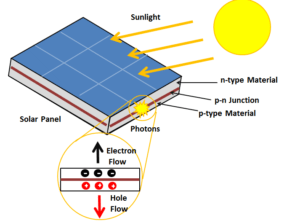
The basic physical mechanism by which a photovoltaic (PV) cell produces electricity is called the photovoltaic effect. Several crucial phases are part of this process:
Absorption of light:
The semiconductor material, most often silicon, absorbs sunlight that strikes the surface of a photovoltaic (PV) cell.Within the silicon atoms, the electrons receive the energy from the light.
Generation of Electron-Hole Pairs:
Separation of Charges:
A built-in electric field is included in PV cell design at the junction of two distinct semiconductor materials (p-type and n-type silicon).
Effectively separating the charges, this electric field drives the holes towards the p-type side and the free electrons towards the n-type side.
Generation of Electric Current:
An external circuit enables electrons to move from the n-type side through the circuit and back to the p-type side, therefore producing an electric current, once the charges are separated.
After that, one can use this current to feed it into the power grid or to power electrical equipment.
Conversion to usable power:
Semiconductor Material:
Silicon is the semiconductor material used in solar cells the most often because of its abundance and effective photovoltaic characteristics. Positive (p-type) silicon and negative (n-type) silicon are its two varieties.
Antireflective Coating:
More light is absorbed and transformed into electricity when this coating reduces the reflection of sunlight off the solar cell’s surface.
Conductive metal contacts:
The front and back of the solar cell house these contacts, which are usually composed of silver or aluminum. They gather and carry the electricity the cell produces.
Protective Layers:
Solar cells are safeguarded from mechanical damage and moisture by layers of protection. These layers typically include a polymer back sheet for the rear side and glass for the front side.
Junction Formation:
The line dividing the silicon layers of type p and type n is called the junction. It is essential to generating the electric field that propels current flow and divides the electron-hole couples.
2. Types of Solar Cells
2.1 Monocrystalline vs. Polycrystalline
Monocrystalline solar cells:
Comprising a single, continuous crystal structure. Sliced from cylindrical ingots, the silicon is extremely pure.
Efficiency: usually 15%–20% higher than that of polycrystalline cells.
They look uniformly dark black and are frequently more visually appealing.
Cost: The energy-intensive manufacturing process usually makes it more expensive to create.
Durability: Distinguished by their extended life and excellent low-light performance.
Polycrystalline solar cells:
Built of molten silicon crystals. Rather than a single crystal, silicon fragments are used in the procedure.
Efficiency: 13%–16% is the range of efficiencies, somewhat lower than monocrystalline cells.
The different crystals give them a blue, speckled look.
Cost: A less wasteful and simpler manufacturing process means it is less expensive to produce.
Performance: Compared to monocrystalline cells, they have somewhat worse performance at high temperatures.
2.2 Thin-Film Solar Cells
Structure and Composition:
Made by coating a substrate made of glass, plastic, or metal with one or more layers of photovoltaic material (such as cadmium telluride, amorphous silicon, or copper indium gallium selenide).
The fact that they are far thinner than conventional silicon-based cells enables flexibility and a range of uses
Efficiency:
Generally speaking, they are less efficient than silicon-based cells; usual efficiencies fall between 10% and 12%.
They do best, though, in hot, low-light situations.
Advantages:
Building-integrated photovoltaics (BIPV) and portable solar products are only two of the many installations for which they are appropriate because of their flexibility and lightweight nature.
Less materials used and simpler manufacturing procedures translate into lower production costs.
Applications:
Perfect for big solar farms and business installations when weight and space are not as important.
Their elasticity qualifies them for use on unusual surfaces, such as curved or flexible constructions.
Understanding the physics underlying photovoltaic cells and the different kinds of solar cells that are now accessible will help us to appreciate the technical developments that make it possible to convert solar energy into electricity effectively, therefore opening the door to a more sustainable future.
D. Solar Power System Components
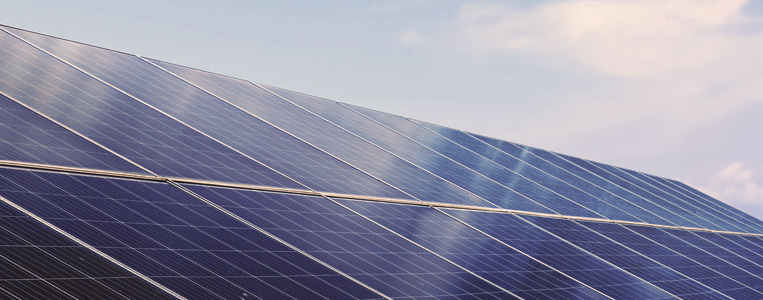
1. Solar Panels
1.1 How Solar Panels Capture Sunlight
Multi-photovoltaic (PV) cells make up solar panels, which collect sunlight and turn it into power. Semiconductor materials—typically silicon—make up each PV cell. Direct current (DC) electricity is produced when sunlight strikes these cells and excites the electrons to flow.
How well sunshine is gathered and turned into power depends on the configuration of cells in a panel as well as the panel’s orientation and angle with respect to the sun.
Furthermore, improving light absorption and shielding the cells from environmental degradation are anti-reflective coatings and glass encapsulation.
1.2 Efficiency and Performance Factors
Several factors affect the efficiency and performance of solar panels:
Material Quality: Higher-quality semiconductor materials yield better efficiency.
Temperature: High temperatures can reduce panel efficiency. Panels perform best in cooler conditions.
Shading: Even partial shading from trees, buildings, or debris can significantly reduce output.
Angle and Orientation: Optimal positioning to maximize exposure to direct sunlight throughout the day and year is crucial.
Maintenance: Regular cleaning and maintenance prevent dirt and debris buildup, ensuring maximum light absorption.
2. Inverters
2.1 Role of Inverters in Energy Conversion

2.2 Types of Inverters: String, Micro, and Central
String Inverters:
The most often seen kind, string inverters, connect several solar panels in series. They are cost-effective and suited for installations with low shade. The performance of the entire string can be impacted, though, by shading on a single panel.
Microinverters:
On every panel are microinverters, which, at the source, convert DC to AC. Individual panel optimization made possible by microinverters lessens the effect of shade and raises system efficiency generally. Better performance in installations with variable conditions is what makes them more expensive.
Central Inverters:
Central inverters: Applied to large-scale solar projects, central inverters manage the conversion of a whole array of panels. For big systems, they are economical, but if some of the array is shaded or malfunctions, efficiency may be lost.
3. Batteries and Storage Solutions
3.1 Importance of Energy Storage
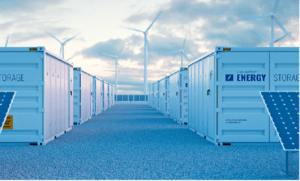
The most out of a solar power system depends on energy storage. In order to be used on cloudy days, at night, or during periods of high demand, batteries store extra electricity produced during sunny times.
This guarantees an uninterrupted power supply and, by lowering grid dependency, increases energy independence. Good energy storage raises the general dependability and efficiency of the system, enabling consumers to better control their energy consumption and benefit from time-of-use pricing.
3.2 Types of Solar Batteries
Lead-Acid Batteries:
Lead-Acid Batteries: Long used in solar systems, these are dependable and reasonably priced but, in comparison to more recent technologies, have a shorter lifespan and poorer energy density. The gas emissions during the charging and discharging cycles necessitate routine maintenance and ventilation.
Lithium-Ion Batteries:
More efficient, longer-lasting, and requiring less maintenance than lead-acid batteries are lithium-ion batteries. Higher energy density qualifies them for use in both commercial and residential settings. Benefits to performance and longer-term savings more than offset their greater initial cost.
Flow Batteries:
An innovative technology, flow batteries provide extended lifecycles and long-duration storage. They can deliver constant power output and are scalable, which qualifies them for widely used applications. They are less prevalent in home installations, though, and more costly right now.
Saltwater Batteries:
Long-lasting and free of hazardous materials and heavy metals, saltwater batteries are environmentally benign. They have a lower energy density and are less efficient than lithium-ion batteries, but for some applications, their safety and sustainability make them a desirable choice.
Through knowledge of the parts and their functions in a solar power system, users can make wise choices to maximize efficacy, economy, and performance. Technological developments keep improving these elements, which makes solar energy a more practical and appealing choice for a sustainable future.
E. How is solar energy converted into electricity?
With the current situation, finding clean, renewable energy sources has become more and more vital, and solar energy is a possible substitute. However, have you ever stopped to think about how solar energy is converted into electricity?
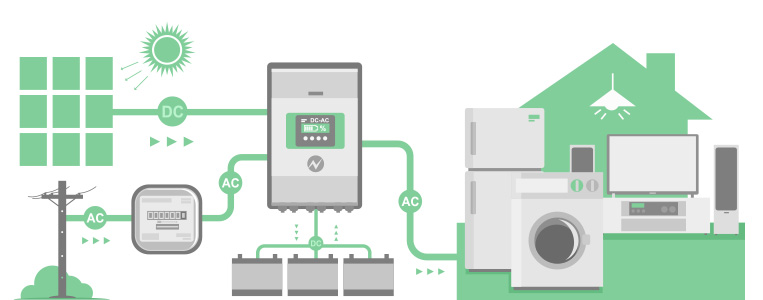
An electric current is produced when sunlight strikes the panels and interacts with the atoms there to cause electrons to move about.
To utilize the energy produced by solar panels, it’s necessary to convert the direct current (DC) they generate into alternating current (AC).
The solar inverter is the device that alters electrical current so that it can be used in homes, businesses, public buildings, businesses, and factories.
It is noteworthy that this process proceeds even on wet or overcast days, albeit somewhat more slowly and in a diminished capacity.
1. Steps in Converting Solar Energy to Electricity
1.1 Solar Energy Collection
Positioning and Installation of Solar Panels
Effective sunlight collection with solar panels is the first stage in turning solar energy into electricity. Maximum efficiency and energy output depend on installation and positioning done correctly:
Optimal Placement:
Solar panels should be arranged to take in as much sunshine as possible all day. This usually translates into facing the panels southward in the northern hemisphere. Their faces should be north in the southern hemisphere.
Angle and tilt:
To make sure the solar panels face the sun at midday, their tilt angle should be modified in accordance with the latitude of the site. Whereas adjustable tilt systems can be adjusted annually to capture more sunlight, fixed tilt systems are fixed at a single angle.
Avoiding Shading:
Solar panels must be installed in locations that are free from shadowing brought on by trees, buildings, or other obstacles. The energy output of a solar panel can be greatly decreased by even slight shadowing.
Roof and ground installations:
Structures affixed to the ground or rooftops can house solar panels. Large solar farms and utility-scale projects frequently employ ground-mounted systems, while rooftop installations are typical for both residential and commercial buildings.
Structural Integrity:
The longevity and safety of the solar panels depend on the roofs and mounting structures’ ability to bear their weight and wind loads. It is advised that professional installation by licensed installers comply with industry norms and building regulations.
1.2 Conversion to Direct Current (DC)
Role of Photovoltaic Cells
Photovoltaic (PV) cells in the solar panels start the process of turning sunlight into electricity after they are positioned and installed correctly:
Light Absorption:
The absorbed energy excites electrons, which then separate from their atomic connections to form electron-hole pairs.
Electric Field Creation:
The p-n junction of PV cells generates an electric field that pushes holes toward the p-type layer and free electrons towards the n-type layer.
Current Generation:
Electric current is produced as electrons pass through the n-type layer and holes via the p-type layer. As direct current (DC) electricity, this current passes through the cell and into outside circuits.
2. Conversion to Alternating Current (AC)
2.1 Function of Inverters in the Process
To be compatible with the power system and to be used by most home appliances, the direct current (DC) electricity produced by the solar panels must be changed to alternating current (AC):
Inverter Role:
Inverters are essential components in a solar power system that convert the DC electricity from the solar panels into AC electricity.
3. Efficiency and Power Quality:
Clean, steady AC power and maximum energy conversion efficiency are the goals of modern inverters. They also have technologies like MPPT, or maximum power point tracking, to maximize the solar panels’ output.
4. Energy Storage and Distribution
4.1 Storing Excess Energy
Solar panel excess electricity is stored in batteries for later use. Typical kinds are flow, lead-acid, and lithium-ion batteries.
Battery Storage:
The excess electricity generated by the solar panels is stored in batteries for future use. Common types include lithium-ion, lead-acid, and flow batteries.
Lithium-Ion Batteries:
Known for their high energy density, long lifespan, and efficiency.
Lead-acid batteries are more affordable but have a shorter lifespan and lower energy density compared to lithium-ion batteries.
Flow Batteries:
Ideal for large-scale storage due to their scalability and long cycle life.
Energy Management:
In order to maximize performance and prolong battery life, controllers that govern the charging and discharging procedures oversee battery systems.

Backup Power:
During grid disruptions, stored energy in grid-tied systems with battery storage can offer backup power, hence improving energy security and dependability.
4.2 Delivering Electricity to the Grid or Home
Distribution of the produced power is the last stage in the conversion process of solar energy:
Grid-Tied Systems:
The produced AC electricity in solar power systems that are grid-tied is fed into the local power grid. Net metering allows homeowners and businesses to use the electricity they produce and sell the utility company any extra.
Off-Grid Systems:
The electricity produced in off-grid systems is stored in batteries and used directly by the home or business. Many times, these devices are employed in isolated places without grid access.
Hybrid Systems:
Features from off-grid and grid-tied systems are combined in hybrid systems. Along with being linked to the grid for backup and selling extra electricity, they can store extra energy in batteries for use during outages or when solar power is insufficient.
Distribution Efficiency:
The efficient delivery of produced electricity to where it is needed is made possible by appropriate system design and components, such as effective wiring and power management systems. This eliminates losses and optimizes the advantages of solar power.
Knowing these stages in the conversion process of solar energy allows us to grasp the intricacy and effectiveness of contemporary solar power systems, which use the energy of the Sun to produce clean, sustainable electricity.
F. Benefits of Solar Energy Conversion
1. Environmental Benefits
1.1 Reduction in Carbon Footprint
One of the most significant environmental benefits of solar energy conversion is the reduction in carbon footprint:
Zero Emissions:
During operation, solar power generation emits no greenhouse gasses. Solar panels provide power without releasing any CO2, methane, or other pollutants, unlike fossil fuels, which, when burned, discharge carbon dioxide (CO2) and other dangerous pollutants.
Combating Climate Change:
Reducing greenhouse gas emissions is one way that solar energy contributes to the fight against climate change. Solar power helps to reduce global temperatures and lessen the serious effects of climate change, including extreme weather, rising sea levels, and ecosystem damage.
Decreased air pollution:
Sulfur dioxide, nitrogen oxides, and particulate matter are just a few of the air pollutants that fossil fuel power plants release, which can cause cardiovascular and pulmonary problems. In contrast, solar energy benefits public health by producing clean electricity and enhancing air quality.
For cooling, traditional power plants—especially those that burn coal, natural gas, or nuclear fuel—need a lot of water. Contrarily, solar photovoltaic (PV) systems do not need water to produce energy, which preserves precious water supplies and lessens the burden on nearby water supplies.
Energy Source Sustainability
1.2. Sustainable Energy Source
Offering long-term advantages for energy security and environmental preservation, solar energy is a practically endless and sustainable resource:
Abundance:
The globe now uses significantly less energy than the sun produces. Global energy needs can be satisfied by using even a small portion of this energy.
Renewable Resource:
Solar energy is renewable as opposed to finite and diminishing fossil fuels. Solar panels are a dependable and everlasting energy source as long as the sun shines.
Energy Independence:
Developing solar power allows nations to become less reliant on imported fossil fuels, therefore improving national energy security. Communities who generate solar electricity locally also become more robust to interruptions in the energy supply.
Scalability and Flexibility:
Solar energy systems can accommodate everything from small rooftop installations for homes to massive, utility-scale solar farms.
2. Economic Benefits
2.1 Cost Savings on Electricity Bills
Solar energy adoption can result in large cost reductions for both homes and businesses on their electricity bills:
Lower Energy Costs:
Once built, solar panels produce free electricity. This decreases energy expenditures each month and lessens dependence on grid power. Many times, after a few years, the savings on electricity bills can cover the original installation expenses.
Net Metering:
Programs known as “net metering” let owners of solar systems sell extra power back to the grid in many areas. This can lower power bills even more and maybe bring in extra money. Future costs are lowered when solar generation surpasses usage since the extra power is credited.
Protection Against Rising Energy Prices:
Protection from Growing Energy Prices: Solar energy offers a hedge against the price of electricity growing. Homeowners and businesses who generate their own electricity are less susceptible to changes in utility costs and can enjoy more financial stability.
Increase in Property Value:
Solar energy system-equipped properties frequently fetch a premium on the open market. Future purchasers are drawn to solar-equipped houses and commercial buildings because they understand the long-term financial savings and environmental advantages.
2.2. Government Incentives and Rebates
Government incentives and rebates play a crucial role in making solar energy more affordable and attractive:
Tax Credits:
Rebates and Grants:
To help with the initial outlay of solar installations, utilities and local and state governments frequently offer grants and refunds. These cash incentives might cover a sizable amount of installation costs.
Feed-in Tariffs:
Certain areas have put into place programs that ensure solar energy producers receive compensation for the electricity they produce and supply to the grid. For solar projects, this can increase the return on investment and offer a consistent revenue source.
Low-Interest Loans and Financing Options:
Power purchase agreements (PPAs), leases, and other low-interest loan options let people and companies more easily afford solar systems. Because these financing options stretch out the installation costs over time, more people can now afford solar energy.
By utilizing these financial advantages, people and businesses may lower their energy bills and help create a sustainable and ecologically friendly energy future. Meeting the world’s increasing energy demands becomes even more appealing when considering the economic and environmental benefits of solar energy.
Coclusion:
A major first step toward a more sustainable future is to switch to solar electricity. Your carbon impact and energy bills can be greatly lowered by knowing the basics of solar energy, choosing the appropriate panels, and installing and maintaining your system correctly.
Federal and state incentives frequently balance out the initial outlay, as do long-term electricity bill reductions. Further improving efficiency are routine maintenance and cutting-edge technologies like battery storage and solar trackers.
Moreover, knowing about developments in solar technology guarantees that you get the most out of your solar investment. Accepting solar energy helps to save money and encourage energy independence, in addition to environmental sustainability. Begin your solar adventure right now to contribute to global energy solutions.
FAQs:
How is solar energy converted to electricity?
Solar energy is converted to electricity through photovoltaic (PV) cells or solar panels. These cells are made up of semiconductor materials, usually silicon, which absorbs sunlight and generate electricity through the photovoltaic effect.
What is the photovoltaic effect?
The photovoltaic effect is the process by which solar panels convert sunlight into electricity. When sunlight hits the semiconductor material in the solar cells, it excites electrons, creating a flow of electricity. This flow is then captured and used as electrical energy.
How do solar panels work at night or on cloudy days?
Solar panels can still generate electricity on cloudy days or at night, albeit at a reduced capacity. During these times, solar panels rely on stored energy from batteries or backup power sources to continue supplying electricity.
What happens to the excess electricity generated by solar panels?
Are there any environmental benefits to using solar energy?
Yes, using solar energy has several environmental benefits. It reduces greenhouse gas emissions, helps combat climate change, conserves natural resources, and promotes sustainable energy production.
Can solar panels work in cold climates?
Yes, solar panels can work effectively in cold climates. In fact, solar panels often perform better in cooler temperatures as they are more efficient at converting sunlight into electricity. However, heavy snowfall can temporarily reduce their efficiency until the snow is cleared.
How long do solar panels last?
Most solar panels are designed to last for 25 to 30 years or more. Their performance may slightly degrade over time, but modern panels are built to withstand various weather conditions and continue producing electricity efficiently throughout their lifespan.
Solar panels require a lot of maintenance?
Solar panels generally require minimal maintenance. Periodic cleaning to remove dust, dirt, and debris can help optimize their performance. Additionally, it’s recommended to have a professional inspection every few years to ensure all components are functioning properly.
What are the financial incentives for installing solar panels?
There are various financial incentives for installing solar panels, including tax credits, rebates, and net-metering programs. These incentives can significantly reduce the initial cost of installation and help homeowners or businesses save money on their energy bills over time.
Can solar panels be installed on any type of roof?
Solar panels can be installed on most types of roofs, including asphalt shingles, metal roofs, and flat roofs. However, the suitability of a roof for solar installation may depend on factors such as its orientation, angle, shading, and structural integrity. A professional solar installer can assess the feasibility of installing solar panels on a specific roof.

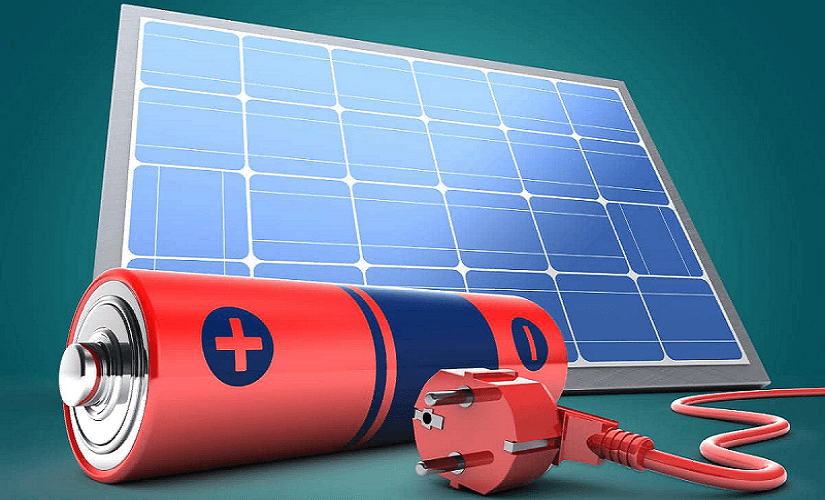

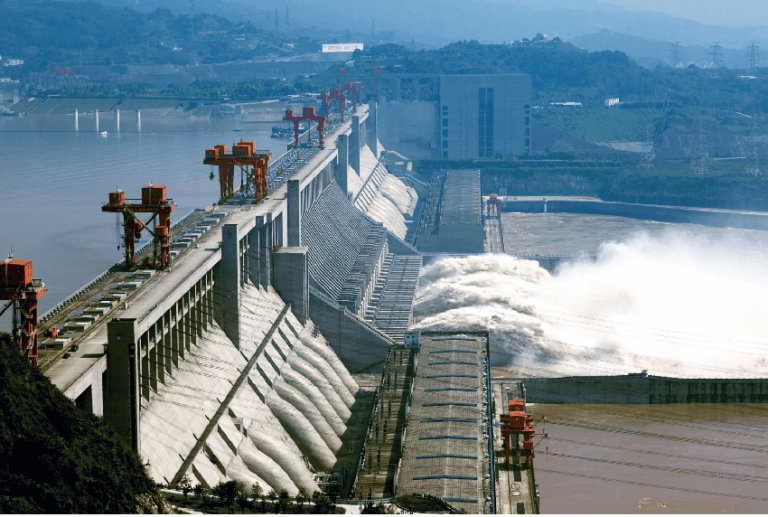
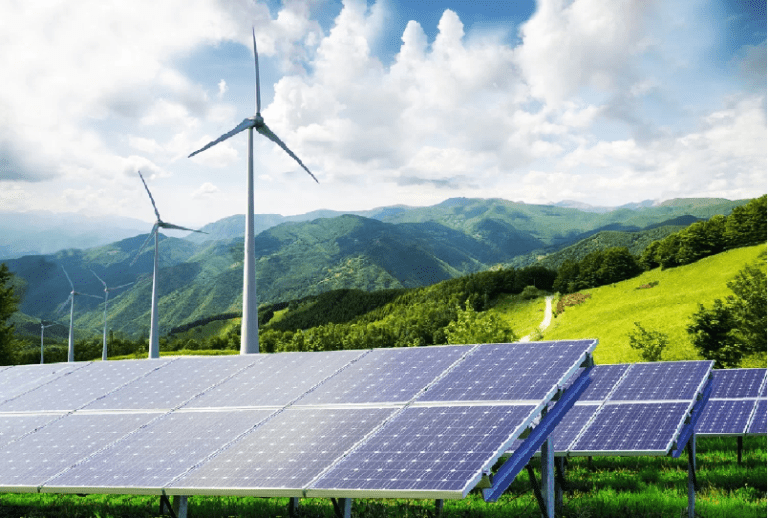
Hey people!!!!!
Good mood and good luck to everyone!!!!!
[…] programs. These initiatives contribute to the decrease of emissions by lowering the amount of energy needed. Upgrades to insulation, energy-efficient lighting installations, and energy-efficient industrial […]
[…] Solar energy heats bodies of water such as lakes, rivers, and oceans, causing water to evaporate and transform […]
[…] a promising solution for providing clean water in remote and off-grid areas. These systems utilize solar energy to power various water treatment technologies, such as reverse osmosis, ultraviolet disinfection, […]
[…] vehicles, one of them being their great energy efficiency. EVs can convert over 77% of the electrical energy derived from the grid and utilize it to power the wheels. Regular gasoline vehicles are only able to convert roughly […]
[…] energy is also significantly cheaper than other sources of renewable energy such as solar in terms of land and space needed for such energy […]